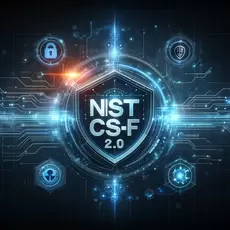The Paradox of Teamwork in Lands of Chiefs and Soloists: A Disruptive Twist to Hofstede’s Analysis7/21/2024 In a world where culture dictates the business game rules, Geert Hofstede’s theories on power distance and individualism invite us to rethink the enigma of teamwork. How is it that companies located in cultures where leaders are venerated and individual brilliance is rewarded continue to bet on collective work? Let’s break down this cultural oxymoron and explore how some organizations are boldly breaking molds.
0 Comments
In the realm of professional development, few skills wield as much influence as effective communication. Whether it’s in a bustling start-up or a structured corporate environment, the way we convey and interpret information can be the deciding factor in our success. This blog delves into three pivotal facets of communication: professional courtesy, closing the communication loop, and the power of empathetic listening.
The proliferation of deepfake technology, particularly through the Visual Affective Skill (VASA) system, presents a new frontier in cybersecurity challenges. As VASA systems enhance the capability to create hyper-realistic video and audio content, they also open up potential vulnerabilities. For cybersecurity practitioners, understanding these risks and preparing to counter advanced hacking tactics is paramount.
In one corner of cyberspace, there's a fervent debate about privacy concerns with machine language models like ChatGPT, Gemini, and Copilot. Meanwhile, in a far more routine corner of our digital lives, the privacy settings of social media and messaging apps go unnoticed. Isn't that ironic? As an academic and observer of this fascinating digital world, I've always believed that security is a perception, shaped by our awareness of threats and risks. Through this article, I aim to shed light on this irony and promote a more nuanced understanding of our online security.
 In an increasingly interconnected world, information security has become a cornerstone for the success and sustainability of businesses. In this landscape, a crucial question arises: Is it better to hire a full-time employee or seek the expertise of a specialized consultant in cybersecurity and information systems? The answer to this question can define your company's ability to navigate the murky waters of digital threats. A cybersecurity consultant not only brings extensive technical expertise but also offers a strategic and tactical vision that aligns perfectly with your business's security and growth objectives. Navigating the Evolution of Cybersecurity: Understanding the Transition from NIST CSF 1.0 to CSF 2.02/28/2024  The landscape of cybersecurity is constantly evolving, challenging organizations to adapt and enhance their security measures. The National Institute of Standards and Technology's Cybersecurity Framework (NIST CSF) has been a pivotal guide in this journey. With the release of CSF 2.0, significant advancements have been made, building upon the foundation laid by CSF 1.0. In this blog post, we will explore the key differences and improvements brought by CSF 2.0, focusing on its scope, focus, structure, and additional features. In 2023, the cybersecurity world witnessed a diverse array of sophisticated threats. From credential stuffing to ransomware, and nation-state attacks, the landscape has evolved rapidly, presenting new challenges for businesses and individuals alike. This post delves into some of the year's most significant breaches, highlighting crucial lessons and strategies for a more secure future.
In an era where every facet of our lives intersects with technology, the specter of cyber threats looms larger with each passing day. The speed and precision with which malicious actors adapt to defensive measures have kept individuals, organizations, and even nations on tenterhooks. The recent security transgressions on a global scale, intertwined with geopolitical tensions, have thrown into sharp relief the pressing need to fortify our digital bastions. As we stand on the threshold of 2024, the imperative to discern the looming cyber challenges and strategize proactively has never been more critical.
 As an information security practitioner, I closely follow the World Economic Forum's Global Risk Report. The 2023 edition has underscored the escalating prominence of cybercrime and cybersecurity as a global risk. "Widespread cybercrime and cyber insecurity" has made its debut in the top 10 rankings of the most severe risks over the next decade (WEF, 2023).  In the digital age, the importance of information security cannot be overstated. As we navigate the complex landscape of cybersecurity, one factor often stands out as both a potential risk and a line of defense: the human factor. This was the focus of my recent doctoral dissertation, where I explored the behavioral and cross-cultural factors that influence an individual's intention to comply with information security policies. |
AuthorDr. Gilberto Crespo is an information security researcher & technology expert. Archives
June 2024
Categories
All
|








